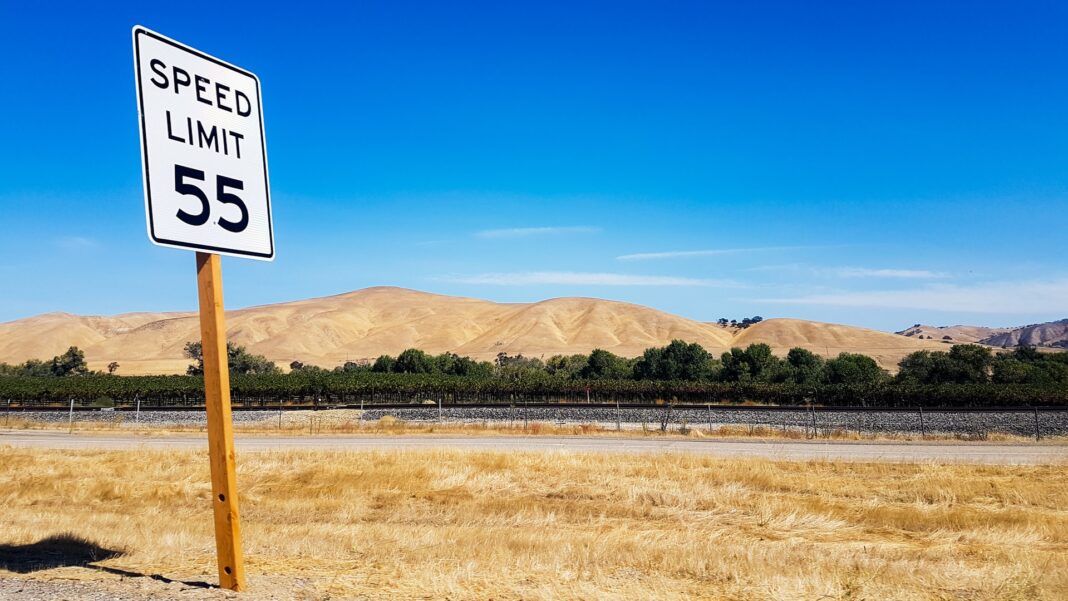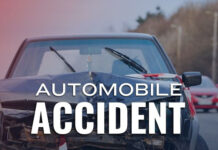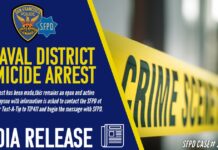SAN FRANCISCO—On January 13, the Office of the Mayor of San Francisco indicated in a press release that the city began lowering speed limits to 20 mph on select corridors using new authority granted under Assembly Bill 43 (AB 43). This new legislation allows local jurisdictions to decrease speed limits in key areas. The first component of the bill went into effect on January 1, 2022, authorizing cities to lower speed limits by 5 mph in business activity districts (that is, those streets where at least half of the property uses are dining or retail).
The first seven corridors where the San Francisco Municipal Transportation Agency (SFMTA) will reduce the speed limit from 25 to 20 mph are:
-24th Street, from Diamond to Chattanooga streets and from Valencia Street to San Bruno Avenue;
-Fillmore Street, from Chestnut to Union streets and from Jackson to McAllister streets;
-Haight Street, from Stanyan Street to Central Avenue and from Webster to Steiner streets;
-Polk Street, from Filbert to Sutter streets;
-Ocean Avenue, from Geneva Avenue to Victoria Street and from Junipero Serra Boulevard to 19th Avenue;
-San Bruno Avenue, from Silver to Paul avenues; and
-Valencia Street, from Cesar Chavez to Market streets.
Signage indicating the new speed limits will be installed on the above corridors starting this week, with implementation over the next 2-3 months. The SFMTA will accompany the changes with education and outreach to inform residents and businesses of the new speed limit reductions and the significance of slow streets for saving lives.
Following the initial seven corridors, the SFMTA will propose additional business activity district corridors for potential 20 mph speed limit reductions to the SFMTA Board this spring.
“San Francisco is committed to making city streets safer, and quickly implementing the changes authorized under AB 43 will be an immediate improvement for our city,” said Mayor London Breed. “Lowering speeds is essential for meeting our city’s Vision Zero goals and advancing safety for all of our residents.”
“Speed is the leading cause of serious and fatal crashes in San Francisco, so reducing speeds is the single most effective tool for achieving Vision Zero,” said SFMTA Director Jeffrey Tumlin. “Just 5 mph can be the difference in whether someone survives a crash. Under AB 43, we’ll be able to set speeds that create safer conditions for all along these key corridors.” AB 43 will enable SFMTA to set speeds that promote safer streets for all along key corridors.
Before the passage of this bill, cities across the state, including San Francisco, were limited in their ability to adjust local speed limits. The California Department of Transportation requires cities to set speed limits at the speed the car is going faster than 85 out of 100 drivers. AB 43 enables cities to determine speed limits for certain corridors based on factors like safety and other street uses.
“I have heard from too many families who have lost a loved one as a result of a speed-related traffic crash,” said City Attorney David Chiu, who co-authored AB 43 as a member of the State Assembly. “We have the tools to prevent these crashes, and with AB 43, we are finally able to use one of those tools. I was proud to help author this bill as an Assemblymember to give cities the ability to make significant, meaningful changes on our streets.”
“We know that the status quo around speed-limit setting on city streets is not working,” said Senator Scott Wiener. “AB 43 represents a transformative change toward California cities like San Francisco being able to make speed-limit decisions that prioritize safety in communities.”
“Giving cities the ability to lower speed limits on key corridors is a long overdue and necessary step forward for Vision Zero across California,” said Assemblymember Phil Ting. “In San Francisco, we are proud to set an example by moving quickly to implement the first phase of AB43, and look forward to continuing to make our streets safer for all.”
“We applaud the City for starting to tackle speed, and also need them to expand and speed up this work. Deadly speeds are on the rise, and too many people will be hurt and killed if more isn’t done,” said Jodi Medeiros, Executive Director, Walk SF. “Addressing the threat of dangerous speeds is at the heart of whether San Francisco can lead on Vision Zero. These first streets getting lower speed limits is an important start toward a more aggressive, comprehensive approach on speed by the city. We’re eager to see many, many more.”
San Francisco’s updated Vision Zero Action Strategy, released in November 2021, commits the city to establishing a comprehensive speed management plan to progress the goal of decreasing traffic deaths and reducing serious injuries. Lowering speeds, as authorized by AB 43, is a key part of San Francisco’s approach to speed management, which includes traffic signal re-timing, traffic calming, and repurposing travel lanes to promote safety. The city conducted outreach for the Vision Zero Action Strategy in early 2021, where the public expressed support for 20 mph speed limits and traffic calming throughout the City.
Another provision of AB 43, will go into effect no later than June 2024, authorizes cities to lower speeds by 5 mph on streets that are designated as “safety corridors,” or those that have the highest number of serious injuries and fatalities. In San Francisco, 75 percent of serious and fatal collisions occur on just 13 percent of city streets.
Over half of the corridors on San Francisco’s High Injury Network are in Equity Priority Communities, and this portion of the bill will allow San Francisco to advance both equity and safety goals. SFMTA already implemented 20 mph speed limits and other traffic calming treatments throughout the Tenderloin, where every street is on the High Injury Network, and will continue to give precedence to street safety investments in Equity Priority Communities while planning for further AB 43 implementation.







